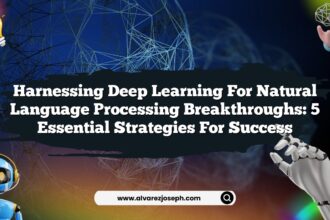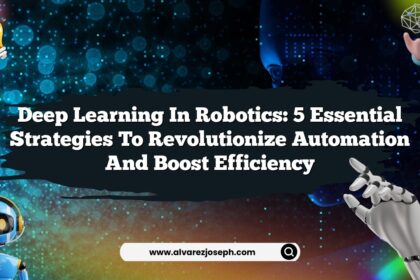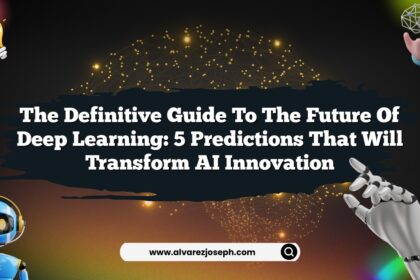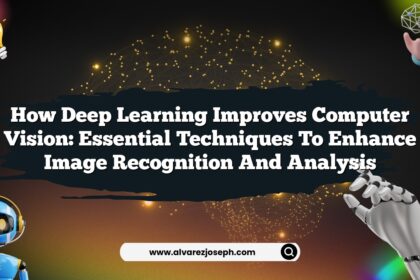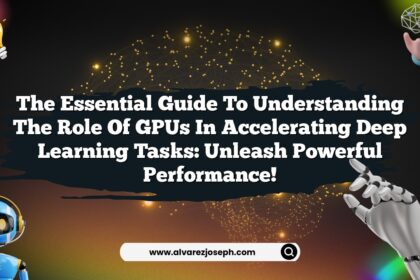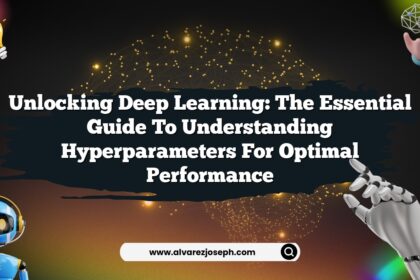In the world of machine learning, the battle between Deep Learning and Support Vector Machines (SVM) isn’t just a technical debate; it’s a showdown that can make or break your next project. Imagine you’re at a crossroads, and every decision you make could either catapult you into success or plunge you into the depths of confusion. So, how do you choose? Let’s dive deep into this fascinating arena, breaking down the intricacies of both methodologies, so you can emerge victorious.
Understanding Deep Learning and its Applications
Deep Learning is a subset of machine learning that mimics the functioning of the human brain through artificial neural networks. Picture a brain-like structure, where layers of neurons process data, learning from vast amounts of information. It’s like teaching a toddler—feed them tons of examples, and they’ll gradually learn to identify objects, speech, or even emotions!
But what can Deep Learning actually do? The applications are practically endless:
- Image Recognition: Think about how your phone recognizes your face to unlock it. That’s deep learning at work!
- Natural Language Processing: When your virtual assistant responds to your queries, it uses deep learning to comprehend and generate human-like text.
- Speech Recognition: Ever marveled at how well Siri understands your commands? Yup, deep learning again!
However, with great power comes great responsibility. While Deep Learning excels in handling vast datasets, it often requires significant computational resources and time to train models. But this isn’t where the story ends…
The Mechanics of Support Vector Machines
Now, let’s pivot to Support Vector Machines. Imagine you’re at a party, trying to decide which group of friends to join based on their interests. You’d look for the best way to separate the groups, right? That’s precisely what SVM does—it finds the hyperplane that best separates different classes in your data.
SVMs are particularly effective in high-dimensional spaces, making them a go-to choice for tasks like:
- Text Classification: From spam detection to sentiment analysis, SVMs can classify text with remarkable accuracy.
- Image Classification: Think about sorting photos based on content—SVMs can help categorize images efficiently.
- Bioinformatics: In healthcare, SVMs assist in classifying genes and proteins, enhancing diagnostics.
One of the main strengths of SVM is its robustness against overfitting, especially in high-dimensional spaces. But here’s the kicker—what if your data isn’t linearly separable? This is where SVMs can become a bit tricky…
Weighing the Pros and Cons: Deep Learning vs SVM
Now, let’s break down the advantages and disadvantages of each approach. Grab your virtual scales, because it’s about to get interesting!
Deep Learning Advantages
- Handles Large Data: The more data, the better! Deep learning models thrive on large datasets.
- Feature Extraction: Automatically identifies intricate patterns without needing manual feature engineering.
- Versatility: Can be applied to various domains—image, text, audio, you name it!
Deep Learning Disadvantages
- Resource Intensive: Requires significant computing power and longer training times.
- Data Hungry: Needs a vast amount of data to perform well, often making it impractical for small datasets.
- Complexity: Tuning hyperparameters can be a daunting task, requiring expertise.
SVM Advantages
- Effective in High Dimensions: Works exceptionally well in high-dimensional spaces, making it great for text classification.
- Robust to Overfitting: Especially effective with small to medium-sized datasets.
- Less Data Required: Can perform well even when the dataset is relatively small.
SVM Disadvantages
- Limited by Complexity: Struggles with large datasets due to slow training times.
- Hyperparameter Sensitivity: Performance can drastically change with different parameter settings.
- Nonlinear Data Issues: While kernel tricks help, SVMs can still underperform if the data isn’t suitable.
It’s evident that each approach has its own arsenal of strengths and weaknesses. But which one is right for you? Well, it depends on your specific needs, and the plot thickens from here…
Factors Influencing Your Choice: Deep Learning or SVM?
Choosing between Deep Learning and SVM is like deciding between a Swiss Army knife and a scalpel. It all comes down to what you’re cutting into! Here are some factors to consider when making that decision:
1. The Volume of Data
If you have heaps of data—think thousands or millions of samples—Deep Learning could be your best friend. Conversely, if you’re working with a smaller dataset, SVM might just be the ticket.
2. Resource Availability
Do you have access to powerful GPUs and ample time for training? If so, Deep Learning might be the way to go. If not, consider SVM for its efficiency.
3. Problem Type
Are you dealing with complex imaging tasks or natural language processing? Deep Learning shines here. On the flip side, if your problem is more straightforward, like binary classification, SVM could be more suitable.
4. Interpretability
Do you need to explain your model’s decisions to stakeholders? In this case, SVM offers more interpretability compared to the often opaque layers of a deep learning model.
5. Time Constraints
If you’re under tight deadlines, SVMs can provide quicker results than the lengthy training process of deep learning models. But remember, quick doesn’t always mean better…
Real-World Examples: Success Stories
Let’s sprinkle in some real-world applications to illustrate both methodologies in action.
Deep Learning in Action
- Google Photos uses Deep Learning for intelligent photo organization, recognizing faces, places, and objects to help you find memories in a snap!
- Tesla’s Autopilot relies on deep learning algorithms to interpret real-time data from cameras and sensors, enabling semi-autonomous driving. Talk about innovation on wheels!
SVM in Action
- Email Spam Detection: Major email providers like Gmail utilize SVMs to effectively filter out spam messages, keeping your inbox clean.
- Handwritten Digit Recognition: The MNIST dataset, a staple in machine learning, showcases how SVMs can accurately classify handwritten digits with impressive precision.
These cases reveal the power and adaptability of both methodologies, but how does one keep pace with the rapid evolution in this field? The answer lies in…
Staying Updated: Continuous Learning and Adaptation
Machine learning is an ever-evolving landscape. To stay ahead of the game, consider the following strategies:
- Engage with the Community: Participate in forums, attend workshops, and collaborate with fellow enthusiasts.
- Explore Online Courses: Platforms like Coursera and Udemy offer courses on both Deep Learning and SVMs, helping you sharpen your skills.
- Follow Industry Trends: Keep an eye on emerging technologies and techniques to understand how the field is changing.
Being proactive about learning is essential. After all, the next big breakthrough might just be around the corner!
Quick Summary
- Deep Learning mimics brain functions through layers of neurons and thrives on large datasets.
- Support Vector Machines find hyperplanes for effective classification, excelling in high-dimensional spaces.
- Deep Learning is ideal for complex tasks like image recognition and natural language processing.
- SVM is more efficient for small to medium datasets and offers better interpretability.
- The choice between models depends on data volume, resource availability, and problem type.
- Real-world applications showcase both methodologies in action, from Google Photos to spam detection.
- Continuous learning and staying updated are essential in the rapidly evolving machine learning field.
- The effectiveness of each model can vary dramatically based on hyperparameter settings.
- Understanding the specific needs of your project is crucial for choosing the right approach.
- Ultimately, the decision may come down to personal preference and project requirements.
Frequently Asked Questions
What is the main difference between Deep Learning and Support Vector Machines?
Deep Learning uses layered neural networks for complex data patterns, while SVM finds optimal hyperplanes for classification.
When should I use Deep Learning over SVM?
Opt for Deep Learning when you have large datasets and complex tasks, like image or speech recognition.
Can SVM be used for text classification?
Absolutely! SVMs are commonly used for text classification, such as spam detection and sentiment analysis.
Is Deep Learning always better than SVM?
Not necessarily. The effectiveness depends on the data volume, complexity of the task, and resource availability.
How does computational cost compare between Deep Learning and SVM?
Deep Learning generally requires more computational resources and time for training compared to SVM.
Is it possible to combine Deep Learning and SVM?
Yes! In some applications, hybrid models that leverage both methodologies can yield superior results.
Choosing between Deep Learning and SVM can feel like picking the right emoji for a text—context matters! As you weigh your options, consider what you truly need, and remember that both paths can lead to exciting discoveries. Happy learning!




